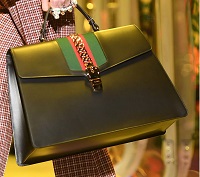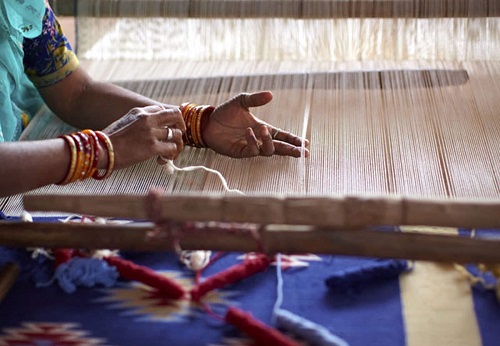FW
Hikari (Shanghai) Precise Machinery Science & Technology, a leading Chinese sewing technology provider, has launched hot air seam sealing machine in India to produce the body coverall, a major product in PPE kits. The launch has come at a time when the manufacturing industry is witnessing scarcity of seam sealing technology in these unprecedented times of COVID-19.
Hikari has launched the machine under model number *QILi*-XL-A2, and the same is available in the markets wherever Hikari operates, including India. It’s worth mentioning here that the apparel manufacturers are now transitioning into PPE manufacturing in India to cater to not only domestic demand, but also the huge queries they are receiving from other countries.
One Hikari QILi-XL-A2 machine can seal seams of around 6 body coveralls per hour and, depending on how operators operate the machine, the output can be increased by 10 per cent. In an eight-hour shift, the machine can process 48 pieces.
The cost of this machine is 30 per cent less than what its competitors are offering in India in current situation. A few of the early adopters of Hikari seam sealing machines are Honeywell creation, CAREON Health Care, Sulochana Mills and Facctum Wears.
Many fashion industry bodies across the globe have stepped up to help smaller independent designers suffering from loss of orders due to COVID-19. The British Fashion Council has set up an emergency fund to help British designers but has called on the government to provide more aid, which it says is still needed.
Carlo Capasa, President of the Italian Chamber of Fashion, also asked his country’s government for help. Even Marc Jacobs, a well-known name in the industry, says he didn’t manufacture the clothes he designed for his last collection and won’t design a new collection next season. His brand is owned by LVMH.
Orders of many of these independent designers have either being cut or canceled by retailers who have closed stores and face a plunge in demand for new clothing. A March survey of designers by the British Fashion Council found 35 per cent of these designers believed they would go out of business within three months without external support. Half said they would go under by the end of the year.
These independent designers often operate on tight budgets, using the sales from one collection to fund the next. Many still rely on selling wholesale to retailers for the bulk of their earnings, and may sell just a few items straight to shoppers. Either way, any delays or disruptions in their sales can interrupt their cash flow and play havoc with the whole business. They may be unable to buy fabrics, pay manufacturers, or cover other bills, such as rent if they have a store.
Apparel Export Promotion Council (AEPC) has welcomed Union finance minister Nirmala Sitharman's decision to leave more money in the hands of individuals / companies, in the first set of measures announced by her, as a part of Rs 20 lakh crore economic package announced by Prime Minister Narendra Modi to make India self-reliant.
Sakthivel, however, requested the government to extend the benefit under Pradhan Mantri Garib Kalyan Package (PMGKP) for payment of 12 per cent of employer and 12 per cent employee contributions towards EPF accounts, which is extended by another three months till August 2020, to cover all the apparel exporting units as they are highly labour intensive with a huge women workforce.
Welcoming the announcements related to MSMEs, Sakthivel said the facility of Rs 3 lakh crore collateral-free automatic loans for businesses, including MSMEs, will help many businesses get over the liquidity crunch and lack of working capital due to disruptions brought in by the pandemic and resultant lockdown. Sakthivel thanked the finance minister for widening the definition of MSMEs in terms of investment and turnover, as this will enable many of the better doing MSMEs to continue taking benefit of schemes meant for MSMEs.
Other measures to improve the liquidity in the economy like Rs 30,000 crore liquidity facility for NBFCs/HCs/MFIs, Rs 90,000 crore liquidity injection for power discoms and increasing money in the hands of the people through Rs 50,000 crore liquidity via TDS and TCS reductions will go a long way in getting the economy back on tracks, he said.
 CMAI has welcomed the measures announced by Nirmala Sitharaman, Finance Minister, especially those connected with the Government’s support to the MSME Sector – on which she focused on today.
CMAI has welcomed the measures announced by Nirmala Sitharaman, Finance Minister, especially those connected with the Government’s support to the MSME Sector – on which she focused on today.
According to CMAI, the enhancing of the upper limits of the sector, the merging of the manufacturing and service sectors, and the addition of a turnover based criteria, will all go a long way in enabling many more enterprises, especially in the garment Industry, to take advantage of the various schemes under the MSME umbrella.
The additional loans backed by Government guarantee and requiring no collateral or guarantee of the MSME will enable many of its members to get the much-needed working capital assistance that the Industry needs to kick start operations after the lock-down ends. However, it is important that the banks respond to these measures and implement the loan scheme within 4-5 weeks to allow quick start to operations to help the economic growth in the country.
Since a majority of the garment manufacturing units would come under the MSME criteria, CMAI believes that these sets of measures would be a boost for the sector.
A similar support is required for garment retailers and traders. Currently they are not covered by MSME registration. The survival of retailers is important to create demand and avoid bad debts to the MSME manufacturers. Further many MSME members are dependent on the sub-contract orders from large manufactures, exporters, and retailers. Since the entire value chain is impacted, support package has to be made available to the entire textile & apparel value chain.
Therefore, CMAI requested the finance minister to provide support to small manufactures by provide direct grants for in payment of wages for the lock down period and period up to September 2020. Small manufactures will not be able to sustain the losses from lock down and subsequent slow-down in demand. Absence of such grant could lead to up to 30per cent of the units closing down permanently leading to 1 crore job losses in the textile & apparel value chain.
Wrangler, a part of Kontoor Brands, Inc. has launched first ever denim dyed with foam, an innovative technique that uses 100 percent less water than conventionally-dyed denim. The introduction of this Indigood foam-dyed denim represents the brand’s continued commitment to using its global scale to advance the denim industry while maintaining the authenticity, quality and style that consumers expect from Wrangler.
Indigood Foam-Dye entirely replaces the traditional water drums and chemical baths of traditional indigo dyeing, reducing by 100 percent the amount of water required to turn denim that beloved shade of indigo blue. The new dyeing process also reduces energy use and waste by more than 60 percent compared to the traditional denim dyeing process.
The Indigood products will be featured in the Icons collection, giving consumers access to Wrangler’s most iconic products with the highest level of sustainability available on the denim market today. In addition, with absolutely no compromise to quality, the Indigood products include recycled cotton, laser and ozone finishing. The collection includes both male and female jeans, shirts and jackets in dark and light shades.
The launch of Indigood demonstrates Wrangler’s continued commitment to sustainability, reflected in the brand’s global sustainability goals, which include:
• Conserving 5.5 billion liters of water at owned and operated facilities by 2020;
• Using 100% preferred chemistry throughout our supply chain by 2020;
• Powering all owned and operated facilities with 100% renewable electricity by 2025; and,
• Sourcing 100% sustainable cotton by 2025.
 Lack of customer activity is increasing brands’ dependence on fashion forecasters who are guiding them to navigate the ongoing crisis. Firms like WGSN and Stylus are holding in-depth video meetings with clients to advise them on what the post-COVID-19 world might look like.
Lack of customer activity is increasing brands’ dependence on fashion forecasters who are guiding them to navigate the ongoing crisis. Firms like WGSN and Stylus are holding in-depth video meetings with clients to advise them on what the post-COVID-19 world might look like.
These forecasters are not just providing seasonal trend analysis but also guiding brands on surviving the current morass. They reveal that fashion firms are keen to know more about the consumer response in more open economies like China and hear predictions about how people will behave after lockdowns end.
However, macro trends like a consumer call for sustainability or a move away from seasonality have not drastically changed in light of Covid-19. On the contrary, they are accelerating at a faster than anticipated pace, in effect putting trend forecasters into a more pivotal role.
Reliance on trade shows and fashion events
According to Carla Buzasi, Managing Director, WGSN, fashion firms are now looking at forecasters as one of the main forms of data on the market. To cater to increasing demands, forecasters are speaking to their clients and sending them information much more regularly. Stylus is running webinars with live Q&A sessions to its subscriber base. These webinar are included within current subscription models as raising prices or cashing in on the situation would play badly with clients.
demands, forecasters are speaking to their clients and sending them information much more regularly. Stylus is running webinars with live Q&A sessions to its subscriber base. These webinar are included within current subscription models as raising prices or cashing in on the situation would play badly with clients.
Heuritech, which switched from monthly to weekly updates at no extra cost, is helping clients with short-term inventory movement rather than long-term planning that was the norm before.
Forecasters rely on trade shows and fashion weeks to know the direction designers are heading and gauge the reaction of social media influencers to emerging trends. However, as many of these events have been postponed or cancelled, firms like WGSN are reaching out to keynote speakers and exhibitors to find out future plan of action. Similarly, Stylus is prioritizing a number of cross-sector reports on subjects like: homeware, sleep, sex, hygiene and personal care.
Line of predictions
Market analysts firm Bain & Co predicts a revival of China’s luxury market with the country is likely to grab an even greater share of the luxe market at a much faster rate than anticipated, as Western economies go through sluggish recoveries. However, another trend forecaster and consultant Geraldine Wharry cautions against making any rash predictions about how the industry is likely to look when lockdowns and social-distancing measures end.
Many forecasters agree Covid-19 outbreak could force many brands to reevaluate their business models. Some of these brands may also have to change their mode of operations in order to survive. Emily Gordon-Smith, Director, consumer product at Stylus, anticipates a move to more trendless and seasonless approaches by fashion brands, with collections driven by individual vision of the brand rather than one tapping into shifting seasonal trends. According to her, clients are showing interest in these types of collections right now and evolving their own brand identity into something that's stronger and more individual.
Brands embracing the principle of design with purpose are also gaining more popularity than those more tied into the traditional fashion calendar. This benefits everyone from consumer, brands’ to the planet, Buzasi notes.
 Completely freezing the global textile and apparel value chain, COVID-19 has highlighted some of the major faults in the apparel industry that need to be addressed both in the short and long terms.
Completely freezing the global textile and apparel value chain, COVID-19 has highlighted some of the major faults in the apparel industry that need to be addressed both in the short and long terms.
Varied responses across the apparel value chain
Though all parties of the apparel value chain were affected by COVID-19, they were not equally positioned to navigate through this sudden disruption. Fashion retailers responded by canceling all orders including those under production. A study by Center for Global Workers’ Rights for Bangladesh reveals this led to around 72.1 per cent of the buyers refusing to pay for their purchased raw materials while 91.3 per cent of them refused to pay for the production cost of the supplier. Not only did this leave factories stranded also factory workers, 85 per cent of whom are women, were left without any cash in hand. Millions of these workers were also furloughed and terminated without compensation.
Imbalanced equation between buyers and sellers
According to the McKinsey Global Fashion Index, one of the reasons for this distorted outcome is that over a period of time the power equation between buyers and suppliers has become more and more imbalanced. During the 10 year period between 2008 to 2017 top-20 fashion companies cornered on average 88 per cent of entire industry profits.
has become more and more imbalanced. During the 10 year period between 2008 to 2017 top-20 fashion companies cornered on average 88 per cent of entire industry profits.
This imbalance has created two types of sourcing trends in apparel global supply chains. First is the ‘price squeeze’ trend in which buyers constantly seek to lower the price paid to the manufacturers. Second type is known as ‘lead time squeeze’ in which buyers seek to reduce the lead time of factories.
No payment guarantee for manufacturers
Article 7.1.1 of the Vienna Convention for International Commercial Contracts recommends applying force majeure claims to factories producing items. A few years ago, most payment terms were agreed on Letters of Credit (LCs), in which a bank provided guarantee to the seller upon presenting certain documents as proof that production has completed to the buyer’s required standards. However, a layer of bureaucracy was added to the process as relationships between buyer and seller developed, a prevalent system emerged of Sales Contracts (SC) based on Purchase Order (PO) issued by a buyer. Based on SC, the manufacturer would raise its own LC to procure necessary raw materials to complete the order. The SC terms typically provide for legal recourse in case of non-payment.
The flaw in this payment system led to buyers delaying payments and even cancelling orders citing extraordinary circumstances. The manufacturers were left without any bank guarantee even for partially completed orders.
Egalitarian payment structure with modern technology
Therefore, all industry stakeholders need to evolve a more egalitarian payment structure which covers manufacturers’ expenses as per the stage of the order execution. In this system, manufacturers are compensated for the purchase of necessary raw materials with the balance payment being guaranteed by contracts or LCs.
To arrive at cost-effective solutions, the fashion industry value chain can also deploy modern technological solutions. These technologies can help the industry to monitor the execution of these solutions and establish trust in data by blockchain, which could then be linked with the stage-wise payment mechanism. Whatever solution the industry adopts, it needs to recognize that the current equation that puts the entire burden of such disruptions on manufacturers is grossly unfair and needs to be amended.
As of 31 March 2020 the Salvatore Ferragamo Group reported total revenues of 222 million euros a decline of 30.1 per cent at current exchange rates againts 317 million Euros recorded in 1Q 2019.
The group registered a solid performance in January in all its main markets, that increasingly deteriorated in February and March, first in China and Asia and progressively also in Europe, in America and in the rest of the world, following the rapid diffusion of the pandemic caused by a novel coronavirus, known as Covid-19. The consequent decisions taken by the National governments regarding prohibitions and lock-downs of the commercial activities and of the international traffic, brought to the closure of the majority of the Group's store network in those countries and to a significant reduction in traffic in the remaining
As of 31 March 2020, the group's retail network counted on a total of 652 points of sales, including 391 Directly Operated Stores (DOS) and 261 Third Party Operated Stores (TPOS) in the Wholesale and Travel Retail channel, as well as the presence in Department Stores and high-level multi-brand Specialty Stores.
In 1Q 2020 the retail distribution channel, negatively impacted by the progressive closure of the majority of the distribution network in February and March and by the significant lack of traffic in the remaining stores, posted consolidated Revenues dow
The Wholesale channel registered a decrease in revenues of 32 per cent (-34.8 per cent at constant exchange rates2) againts1Q 2019, also penalised by the cancellation of orders, mainly in the Travel retail channel, and further disadvantaged by the comparison with 1Q 2019 that had benefitted from the recouped
The Asia Pacific area is confirmed as the Group's top market in terms of revenues, decreasing by 43.per cent (-43.8 per cent at constant exchange rates2) vs. 1Q 2019. In 1Q 2020 the retail channel in China reported revenues down 39.9 per cent. (-39.0 per cent at constant exchange rates2).
EMEA posted a decrease in revenues of 26.0 per cent (-26.3 per cent at constant exchange rates2) vs. 1Q 2019.
North America in 1Q 2020 recorded revenues down by 18.5 per cent (-24.7 per cent at constant exchange rates2)
According to latest data by the CCF Group, United States has become the hardest hit and global economic activities have been greatly affected. US textile and apparel imports reached 4.19 billion sq mt in March, declining by 12.6 per cent year-on-year; the volume from China was 940 million sq mt, declining by 38.7 per cent year-on-year.
Textile and apparel imports by USA have been showing negative growth for six consecutive months, and declined more quickly; the volume from China saw faster speed than the total, a negative growth for seven consecutive months. April import demand will be weaker. In terms of import value, it declined faster year-on-year. In the first quarter, the cumulative US textile and apparel imports were 14.66 billion sq mt, declining by 10.9 per cent year-on-year; the volume from China was 5.18 billion sq mt, declining by 26.2 per cent year-on-year.
In March, the cumulative US textile and apparel imports were 6.88 billion sq mt, declining by 14.6 per cent year-on-year; the volume from China was 0.92 billion square meters, down by 49.6 per cent year-on-year. In the first quarter, the cumulative US textile and apparel imports were 23.63 billion sq mt, declining by 11.8 per cent year-on-year; the volume from China was 5.1billion sq mt, down 39 per cent year-on-year. From the share, both the volume and value of US textile and apparel imported from China declined significantly in March.
The volume and value of US textile and apparel imported from China in Mar fell to 22.4 per cent and 13.4 per cent of the total textile and apparel imports respectively, 30.1 per cent and 25 per cent lower than that in August of last year mainly due to the epidemic.
Kraig Biocraft Laboratories is preparing to transfer production back to Prodigy Textiles, its Vietnamese subsidiary. During the COVID-19 lockdown, when the company opted to furlough its non-essential staff, the company shifted its spider silk production operations focus to its US research facility. The company is now ready to transition the majority of its production back to Vietnam as soon as the silkworm rearing cycle allows.
During this pandemic, the company has continued to advance and strengthen its production operations. Through vigorous testing of its Dragon Silk™ and Monster Silk® lines, the company identified its best performing and hardy silkworms ideally suited for large scale production. This milestone is the result of a dedicated effort by its US staff, going far beyond standard material performance testing. This first production cycle of 2020, at the company’s Vietnam factory, will utilize these top performing transgenics, forming a solid foundation for the continued 2020 production scale up.
The company anticipates rapid scale up of its recombinant spider silk and will use this year’s first production run to ship materials are dedicated to fulfill an outstanding order, by one of the company development partners. The following production runs will be to address fiber requests made by additional potential development partners and to grow the breeding population.












